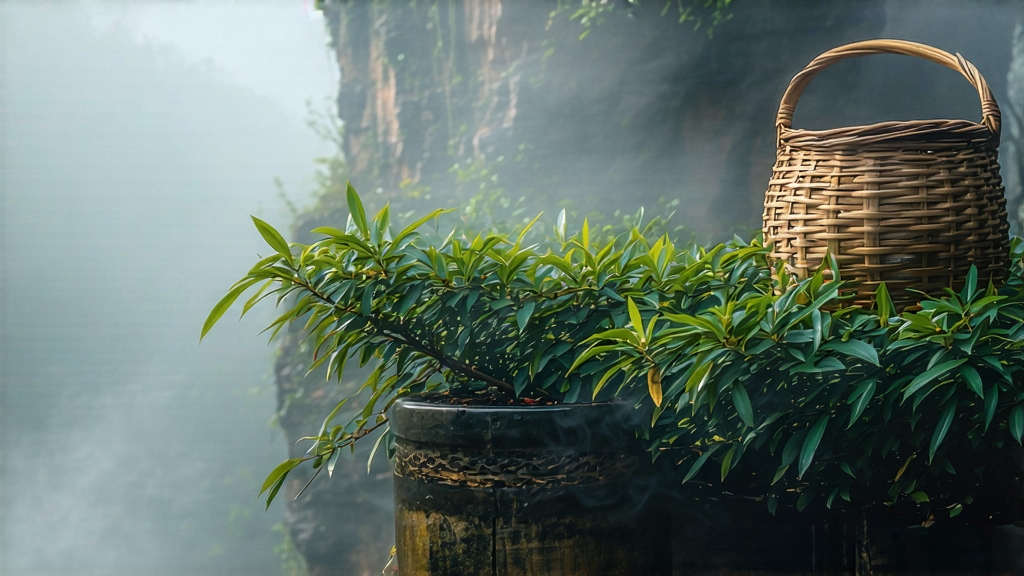
Ask most tea lovers to name a Chinese black tea and they will answer Keemun or Dian Hong; ask a historian which black tea first sailed out of China to conquer European palates and the reply is almost always Lapsang Souchong. Born in the cool, mineral-rich folds of the Wuyi Mountains of northern Fujian, this smoky, wine-dark leaf is the primogenitor of every Chinese red tea that followed. Its story begins in the late Ming dynasty, around 1604, when desperate tea makers in the village of Tongmu hurriedly dried freshly rolled leaves over smouldering pine fires to meet the deadline of a passing Dutch trading agent. The accidental marriage of tea and resinous smoke proved irresistible in Amsterdam, London and St. Petersburg; within decades “bohea” (the Fujianese pronunciation of “Wuyi”) became a household word from Paris parlours to Boston wharves. Thus Lapsang Souchong—literally “small sort from Lapu mountain”—quietly rewrote global beverage history while still being hand-fired in brick-lined kilns no larger than a peasant kitchen.
Geography is the first secret. Tongmu lies inside a national nature reserve where the altitude climbs abruptly from 600 m to 1 800 m, trapping cool mists that slow leaf growth and concentrate amino acids. The soil is a stony cocktail of weathered volcanic tuff and granite, porous enough that a summer shower disappears within minutes, forcing tea roots to dive deep for mineral-rich groundwater. Only six native cultivars are permitted inside the core zone—Xingcun Xiaozhong, Wuyi Qizhong, Jiangbei Chaye, and three clonal selections—each naturally high in geraniol and linalool, the very molecules that later bond with pine smoke to create Lapsang’s signature note of longan and pipe tobacco.
Two distinct styles now share the name. Traditional “smoked” Lapsang is crafted exactly as in 1640: pluck one tender bud and the first two leaves before the Qingming festival, briefly wither over gentle charcoal heat, roll on rattan trays until the leaf edge bruises and reddens, oxidise in cedar-wood boxes for four to five hours, then suspend the fragile strips on bamboo racks above a fire of local Masson pine. The pinewood must be aged at least one year so that sap crystallises and the smoke stays sweet; green pine gives harsh turpentine tones. Masters control the temperature by feel—too hot and the leaf surface caramelises into bitter carbon; too cool and the smoke merely perfumes the room. Every twenty minutes they shuffle the racks, allowing each strand to absorb resin in slow motion. After three to four hours the leaves glisten like dark mahogany and exhale a scent that is part campfire, part dried longan, part incense from a mountain temple. A final bake fixes the aroma; the entire process stretches across twenty-four labour-intensive hours.
The second style, “unsmoked” or “original” Lapsang, emerged for modern markets that crave the tea’s natural fruitiness without campfire overtones. Here the same leaf is withered, rolled and fully oxidised, then baked in bamboo-lined ovens fuelled by charcoal made from oak or chestnut. The result is a sleek, cocoa-coloured strip that steeps into a burgundy liquor tasting of honey, lychee and a whisper of stone-fruit pit. Purists argue it is no longer a true Souchong, yet both versions carry the protected-origin stamp “Tongmu Guanliansuo,” a seal tighter than many French AOC wines.
Crafting either style demands a calendar watched as closely as a vintner’s. The spring picking window lasts barely ten days; rain on any one morning can halve the concentration of aromatic volatiles. After night plucking—when leaf temperature is lowest and turgor pressure highest—workers carry wicker baskets no deeper than 10 cm so that the fragile shoots do not bruise and heat up. Every subsequent step is timed to the minute: 45 min of sun-withering until the leaf loses 15 % moisture, 2 h of indoor withering on reed racks until it bends without snapping, 30 min of rolling at 28 rpm to rupture exactly 65 % of cell walls. Oxidation is arrested the instant the leaf edge reaches a chestnut-brown matched against a farmer’s dog-eared colour card, unchanged since his grandfather’s day.
To